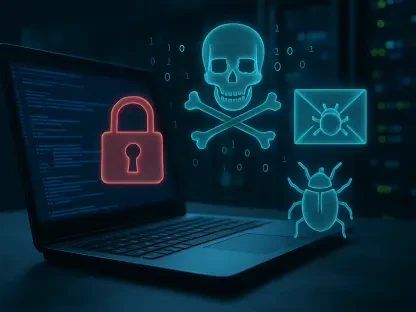Microsoft, a global leader in technology, recently experienced significant cybersecurity breaches that have prompted a proactive response to bolster security measures. The company has launched several strategic initiatives to address vulnerabilities and reinforce its defenses. Named the Secure Future Initiative (SFI), this comprehensive strategy aims to improve governance, accountability, and technical defenses.
The Breaches and Their Impact
Microsoft faced severe cybersecurity incidents that compromised high-profile targets, including U.S. government officials. These breaches, attributed to state-sponsored actors from Russia and China, highlighted critical weaknesses in Microsoft’s security framework. The widespread implications of these intrusions have accelerated the urgency for Microsoft to enhance its cybersecurity infrastructure.
The exposure of sensitive data and the infiltration of critical systems underscore the importance of robust security measures. The adverse impact on reputation and trust has driven Microsoft to adopt a more aggressive stance in protecting its assets and customers from future threats. Consequently, the Secure Future Initiative was launched to mitigate these risks through strategic and comprehensive measures.
Launching the Secure Future Initiative (SFI)
In response to the breaches, Microsoft introduced the Secure Future Initiative in November 2023. This initiative is designed to strengthen security governance, upskill staff, enhance defense mechanisms, and create a resilient cybersecurity infrastructure. By addressing these core areas, Microsoft aims to safeguard its systems and user data against sophisticated cyber-attacks.
Key components of the SFI include establishing a Cybersecurity Governance Council, which consists of Deputy Chief Information Security Officers (CISOs). This council is tasked with regularly assessing cybersecurity risks, compliance status, and refining defense strategies. Additionally, executive compensation has been tied to security performance, ensuring that leadership is directly accountable for maintaining high security standards.
Enhancing Governance and Accountability
The creation of the Cybersecurity Governance Council represents a cornerstone of Microsoft’s strategic response. This body oversees the continual assessment and management of cybersecurity risks, ensuring that policies and strategies remain relevant and effective. By fostering a culture of accountability, Microsoft ensures that security priorities are upheld at every organizational level.
Moreover, linking executive compensation to security performance is a significant step towards enforcing accountability. This measure ensures that leadership has a vested interest in maintaining stringent security protocols and responding swiftly to threats. By integrating security performance into executive evaluations, Microsoft aligns corporate goals with cybersecurity imperatives.
Addressing the Cybersecurity Skills Gap
Recognizing the critical need for advanced cybersecurity skills, Microsoft launched the Security Skilling Academy. This academy aims to bridge the skills gap by equipping employees with the latest knowledge and tools essential for defending against evolving cyber threats. By investing in continuous education and professional development, Microsoft empowers its workforce to better protect the organization’s assets.
The Security Skilling Academy offers specialized training programs tailored to different roles within the company. From technical training for IT staff to security awareness programs for general employees, the academy ensures comprehensive coverage across the organization. This holistic approach helps cultivate a security-conscious culture, ultimately strengthening Microsoft’s overall cybersecurity posture.
Strengthening Core Cybersecurity Pillars
The Secure Future Initiative addresses six key pillars of cybersecurity: identity protection, token management, phishing resistance, tenant and production protection, network security, and threat detection. Each area has received targeted improvements to enhance resilience against cyber-attacks.
Significant advancements have been made in identity protection and token management, such as reducing the lifespan of Personal Access Tokens (PATs) to minimize exposure. In phishing resistance, Microsoft has implemented advanced detection mechanisms to prevent malicious emails from reaching users. By focusing on these fundamental areas, the company is creating a more secure and robust infrastructure.
Centralized Governance and Improved Security Measures
To create a cohesive and fortified security framework, Microsoft’s SFI has centralized governance and standardized security measures. Improvements in production build pipelines and new security checks in the software development process are among the key changes. These measures ensure that security is embedded within the development lifecycle, reducing vulnerabilities from the onset.
Enhanced security audit logs and the reduction of PAT lifespans further contribute to a fortified infrastructure. Standardizing security protocols across the organization ensures consistency and reliability. This centralized approach allows for better oversight and more effective coordination in responding to potential threats.
Commitment to Continuous Improvement
Microsoft, a global technology leader, recently faced serious cybersecurity breaches that have compelled the company to take swift and decisive actions to enhance its security measures. In response to these incidents, Microsoft has rolled out several strategic initiatives aimed at identifying and addressing existing vulnerabilities as well as fortifying its overall security framework.
Central to these efforts is the introduction of the Secure Future Initiative (SFI), a thorough strategy designed to elevate governance, increase accountability, and strengthen technical defenses. The SFI represents a multi-faceted approach to cybersecurity, targeting both the immediate and long-term challenges that the company faces in safeguarding its digital assets.
By implementing these initiatives, Microsoft aims not only to resolve current security issues but also to prevent future breaches, ensuring that their systems remain robust against evolving threats. The company’s renewed focus on cybersecurity underscores its commitment to maintaining trust and reliability in its products and services.
In addition to technical upgrades, Microsoft plans to enhance its governance protocols and increase transparency around security practices. These measures are intended to boost confidence among users and stakeholders, reassuring them that Microsoft is taking significant steps to protect their data and privacy. Overall, the SFI embodies Microsoft’s dedication to a secure digital future, reflecting its proactive stance against the growing landscape of cyber threats.









